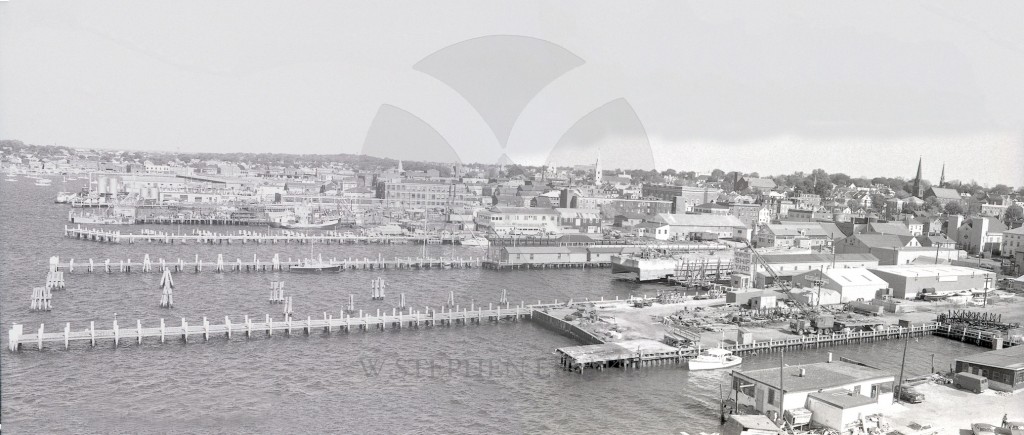
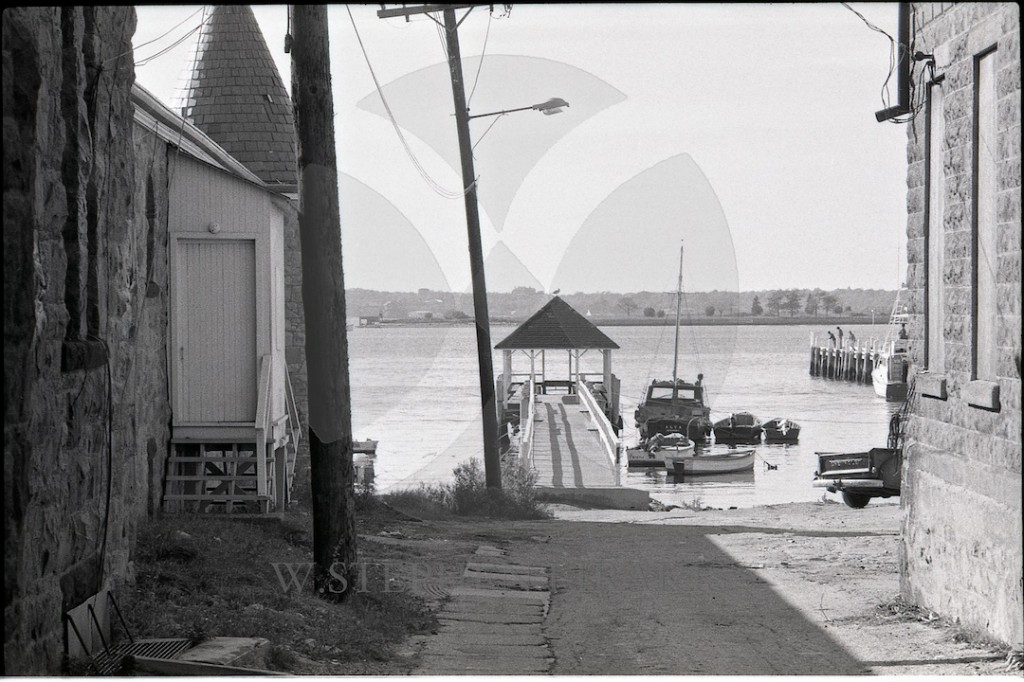
Here are two more photographs of the Newport waterfront; a working waterfront from 1970. Mac’s Clam
Shack, the Newport Shipyard, Christie’s restaurant.
The Ann Street Pier next to the Armory, look carefully at Goat Island in the distance.
Congratulations to Bjorn Johnson appointed the executive director of the Sailing Yacht Research Foundation
SYRF APPOINTS NEW OFFICERS
Scott Weisman joins Board of Directors as new Treasurer, Bjorn Johnson becomes Executive Director
Effective June 1st, the Sailing Yacht Research Foundation (SYRF) will have a new Treasurer and a new Executive Director position filled to help guide the organization forward in its mission to support the science of sailing.
Scott Weisman from White Plains, NY will join the Board of Directors of SYRF as its new Treasurer, filling the position vacated by Peter Reichelsdorfer who retired from SYRF last month. Weisman is a Co-Chairman of Etico Capital LP and Senior Managing Director of Olympus Securities, LLC, and has decades of inshore and offshore racing experience in the Northeast US, having had a succession of designs named Pterodactyl campaigned successfully throughout the region, and most recently also raced the Tripp 41 High Noon. Scott is no relation to San Diego-based fellow SYRF Board member Gary Weisman.
“I joined SYRF because I believe in its mission to support handicap racing with science,” says Weisman. “Science and technology are the anchors to any good handicap system, and I believe that if we have the best technology then we can have the best racing.
“HPR is an example: it is SYRF that has supported the advent of this new system to encourage the design of high-performance offshore yachts that are pushing technology forward, and this concept is getting traction all over the world. I look forward to helping shape this and other dimensions of the SYRF mission for the future.”
SYRF has also created a new Executive Director position to help manage its operations and fundraising efforts of the foundation, which has 501(c)3 status to accept tax-deductible donations. Bjorn Johnson from Newport, RI will fill this position, and brings with him a wealth of both sailing and organizational experience in offshore sailing. With a professional background in real estate project management, Johnson has applied these skills as the leader of several one design class fleets over the past decade, but most notably was also Chairman of the 2010 Newport-Bermuda Race, one of the world’s premier ocean races.
“I see that there is fertile ground available to grow offshore sailing,” says Johnson, “and SYRF can play a very important role in this growth. Besides promoting research and development, I see other key elements being education and transparency in the use of the research that comes from SYRF-funded projects. Owners, sailors, race organizers and managers, and even the media need to know more about how science can be applied to create better sailing for everyone.
“I look forward to finding donors who share this vision, but also working with rating systems and classes to apply these principles.”
Johnson has also accepted the Executive Director position for the Offshore Racing Association (ORA), the owner of the HPR and ORR rating rule systems.
“We are really pleased to have Bjorn and Scott on board,” says SYRF co-Chairman Steve Benjamin. “They both share the Board’s vision and goals for the future, and with their successful backgrounds and experience bring great skills and insight to having us accomplish our mission.”
For more information on SYRF, and information on how to make a tax-deductible donation, visit the website at www.sailyachtresearch.org. For a T2P-produced video explaining the SYRF mission, visit http://youtu.be/jgsdhgvd8A8.
About SYRF: The Sailing Yacht Research Foundation (SYRF) provides the sport of yacht racing with the technology, tools, research, and expertise necessary to broaden and deepen the understanding of yacht dynamics, to improve the fairness of yacht racing handicapping and rating rules, and encourage the universal adoption and implementation of those rules. A 501(c)3 foundation, SYRF was incorporated in 2006 by a group of sailors and scientists who, through research into the performance of competitive sailing yachts, made it their goal to develop the tools that aid in promulgating better handicap racing in all categories.
(ends)
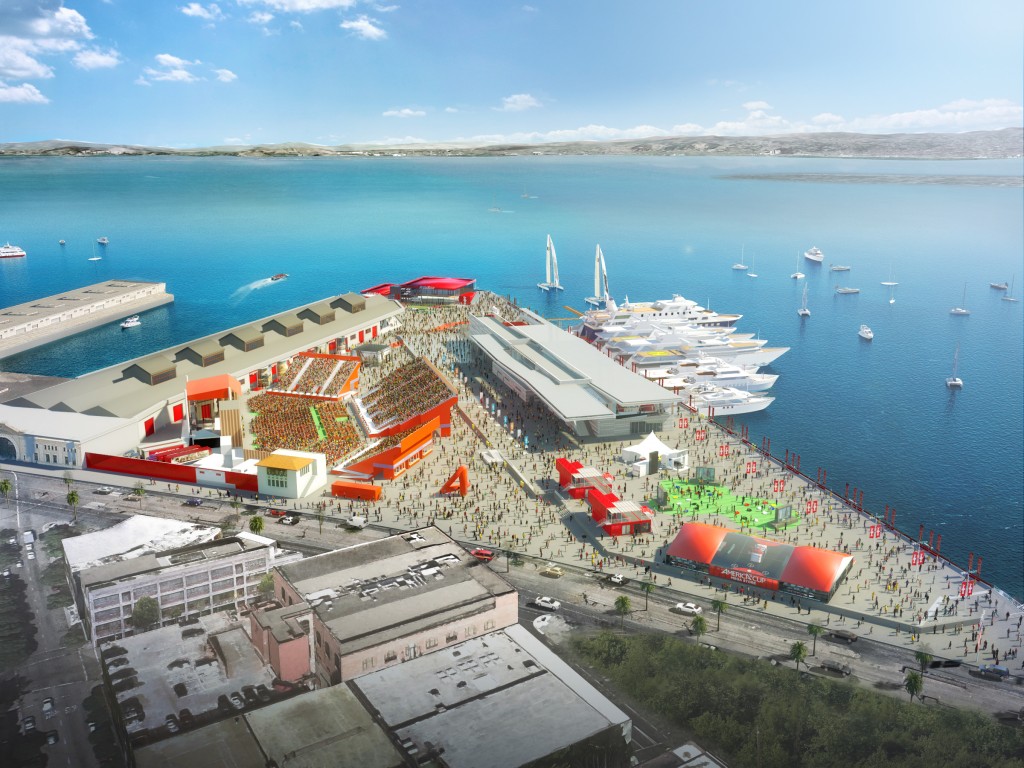
The America’s Cup concert series schedule is published; click: HERE so you won’t miss a beat.
What will happen as the plants from gmo seeds are cross pollinated by bees with non-gmo seeds? surely the bees do not know the difference. And the seeds that are simply blown by the wind.
BLOCK ISLAND RACE 2013 from ws lirakis on Vimeo.
It takes a lot of footage to produce this short clip.
Scenes from what is to come.
Despite the results, I am do not have the kind of courage it takes to do this to my own camera.
| GLOBE CORRESPONDENT MAY 25, 2013

DORIS DUKE MONUMENT FOUNDATION
The spire of Trinity Church is visible behind Queen Anne Square. This seating area, one of three that make up Maya Lin’s installation, suggests domestic life.
NEWPORT, R.I. — The hiss of air spades and the rumble of cement mixers have ceased. The trees have been planted, and the sod placed. The shady, green square that offered rest and respite to travelers in Colonial times has come full circle.
When it reopens on May 31, Queen Anne Square will pay tribute to three women whose vision has left an enduring mark on Newport: Queen Anne, who ruled England from 1702 to 1714 and supported the Anglican Church in general and Newport’s Trinity Church in particular; Doris Duke, who created the foundation credited with preserving Newport’s Colonial architecture; and Maya Lin, one of the world’s foremost landscape architects, perhaps best known for the Vietnam Veterans Memorial in Washington.
The land between Trinity Church and Thames Street, in the area known as “The Hill,” was a center of village life as early as the mid-1700s. During the economic boom of the 1960s, a hodgepodge of commercial buildings spread across the space, nearly obscuring the historic church. In the mid-1970s, Duke, a philanthropist and summer resident of Newport, spearheaded the effort to create a park to be known as Queen Anne Square. In cooperation with Trinity Church, Duke’s Newport Restoration Foundation oversaw the removal of the commercial buildings and the site’s return to a village green.
Forty years later, the foundation has reinvented the square once again, with an eye toward honoring Duke’s preservation efforts, highlighting the role of historic preservation in community revitalization, and celebrating Newport’s history and assets.
“Doris Duke thought out of the box a lot,” said Pieter Roos, foundation director. “That has allowed us to think out of the box.”
Since Duke (1912-93) founded the organization in 1968, the foundation has restored or preserved 83 buildings and today owns one of the largest collections of Colonial architecture in the country. Most are rented as private residences to tenant-stewards. Buildings open to the public include The Whitehorne House, a Federal-era home with a rare collection of 18th-century American furniture; Prescott Farm, featuring 40 acres of green space and a collection of historic buildings; and Rough Point, Duke’s mansion on Bellevue Avenue, overlooking the Atlantic. The foundation also offers Newport History Tours, 75-minute walking tours, in conjunction with the Newport Historical Society.
Lin’s installation at Queen Anne Park, titled “The Meeting Room,” is a series of three seating areas designed to encourage rest, reflection, and conversation. Seating areas are set on stone foundations that form outdoor rooms representing the scale and type of materials used in Newport’s historical buildings, and each is meant to reflect an aspect of life in Newport. Stone thresholds at the entrance to each installation are inscribed with quotations from Newporters that capture the theme.
Describing her vision for the square, Lin wrote: “To be able to create a landscape that reveals the historic aspect of Queen Anne Square in which these physical structures, some of which have stood here for 300 years, hold the history of the people who lived and worked there through time, is an important aspect to me and the project. . . . I imagine it to be a place where people gather together and also can reflect upon how Doris Duke helped preserve so many of these significant historic houses.”
The smallest installation, which rests on a foundation the size of a modest Colonial Newport house (about 16 by 16 feet) and faces a stone fireplace, is meant to suggest domestic life. A passage from Franny Clarke’s 1867 diary reads: “Rained all day. Made jelly & did various other Housekeeping matters which consumed the morning.”
The second, on a slightly larger foundation, surrounds a water table, a typical element in Lin’s designs, and is meant to evoke commercial activity in the 18th and 19th centuries. Here, an entry from John Stevens’s 1726 account book reads: “To turning the arch, to the overplush of ye plastering, to laying five harthes.”
The third installation, about 36 by 22 feet, celebrates community life in the seaside village and includes an entry from the log of the ship Atlas, Henry A. Brightman, Master: “Light airs at 5AM, hove short & made all sail awaiting for the breeze.”
Nearly every element of the park reconstruction is home-grown. The three foundations are built from native Aquidneck Island stone, reclaimed from local historic houses that have been placed on new foundations. The benches are fashioned of local shale. Under the direction of landscape artist Edwina von Gal, who has collaborated with Lin on several projects over the last decade, new tree plantings were chosen based on native species that have historically grown in Newport. The inscriptions — including one from the Charter of 1663 (known as the King Charles charter) for the Colony of Rhode Island, the first document in the English empire to legislate freedom of religion and separation of church and state — have been hand-engraved by Newport artist and stone carver Nick Benson.
In conjunction with the reopening of Queen Anne Square, Rough Point is focusing on Duke’s philanthropy with a special exhibit entitled “A Career of Giving: The Surprising Legacy of Doris Duke.” Through photographs and artifacts, the exhibit paints a picture of the extraordinary range of Duke’s interests and largesse, from Little League teams to the Rosebud Sioux Indian tribe in South Dakota, who gave her the American Indian dress and accessories on display. As they leave, visitors can choose a charity to support from several representing Duke’s interests and cast their vote with chips. When the exhibition concludes, Rough Point will distribute money based on the votes.
Friday’s opening ceremony at the park begins at 10 a.m. It will include remarks by Governor Lincoln Chafee, Dr. Roger Mandle of the Doris Duke Monument Foundation board, and Mayor Henry F. Winthrop.
While I was sailing the Block Island Race, the controversial Maya Lin design for the Restoration Foundation’s Queen Anne Square was re-dedicated. This has been a hot topic for some time in the community. People seem to be resistant to change. I have included several photographs of what had been in place of the park before. I watched Doris Duke perched on a rock direct the placement of rocks and trees when she first decided to make the park.
I actually liked the Egan’s chimney and sign.
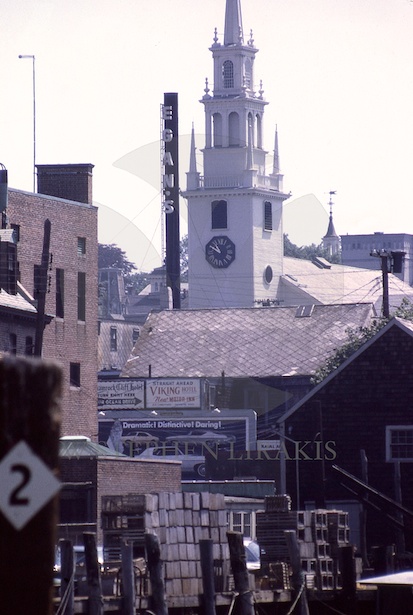

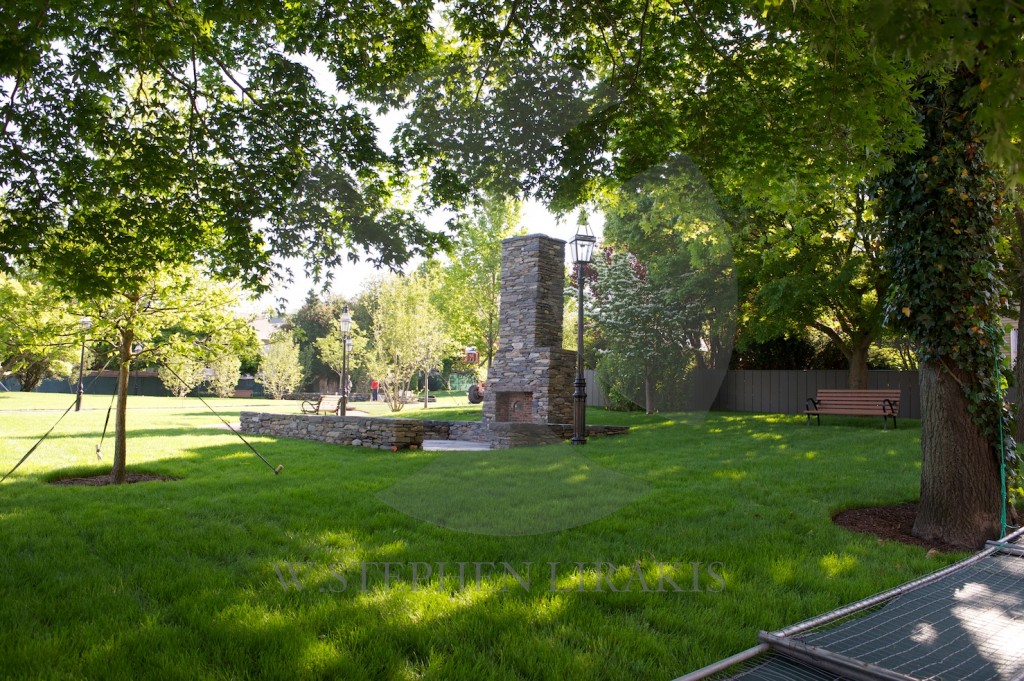
Foiling is the “new” standard in fast sailing. Hydroptere is the recent big boat success. The America’s Cup it is a must do. the Moth class as well. Can the “C” class cats be far behind? There have been foiling “C” class boats but will it be a must for the upcoming championship in September of this year?
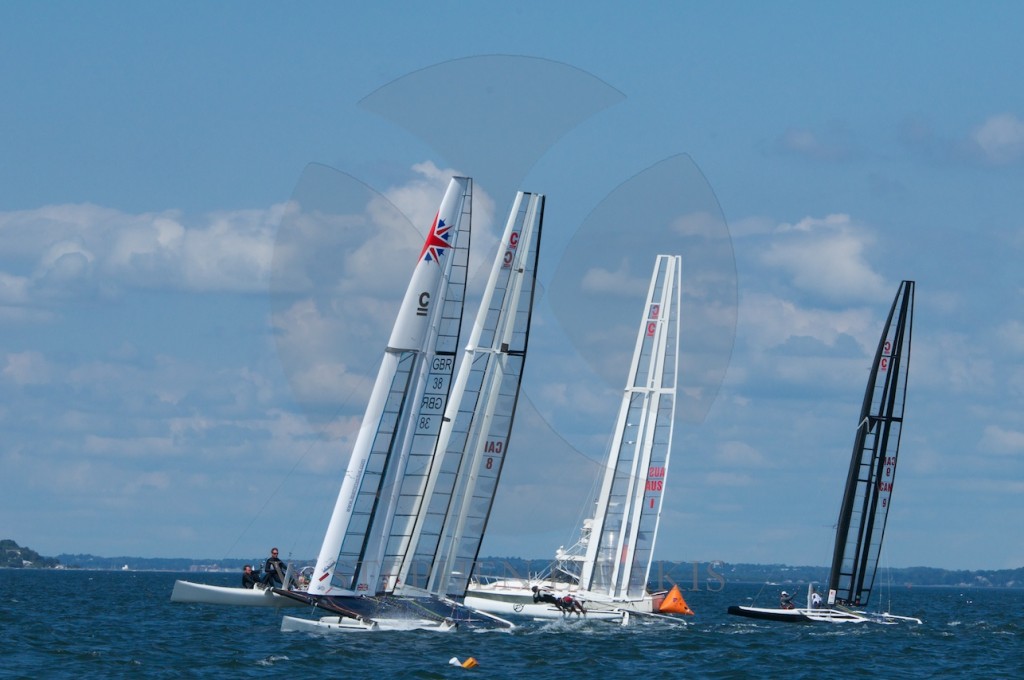
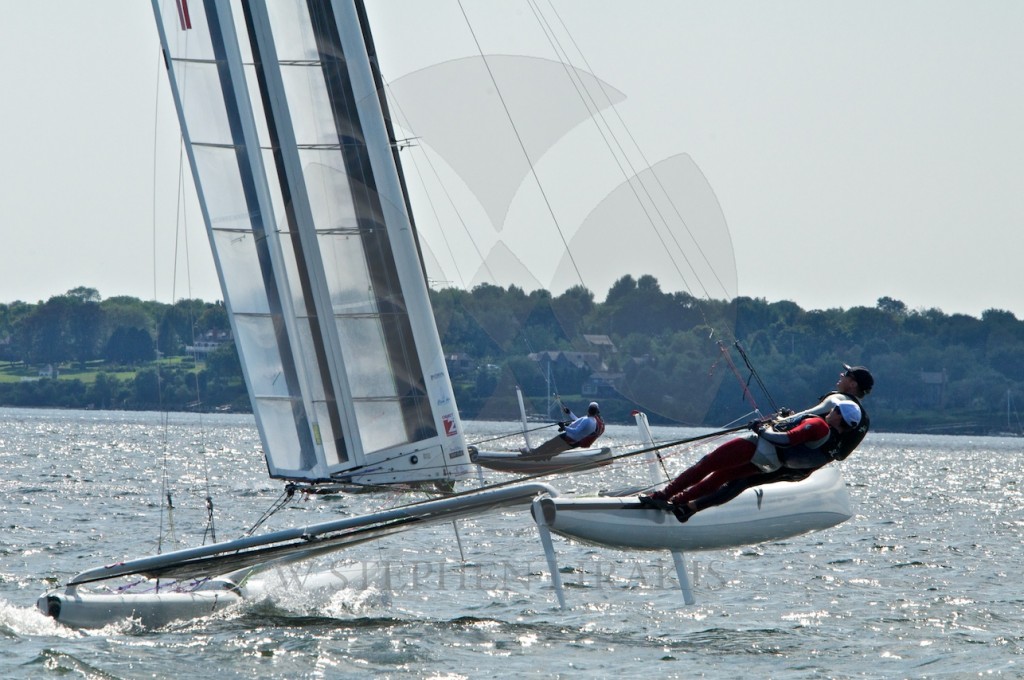
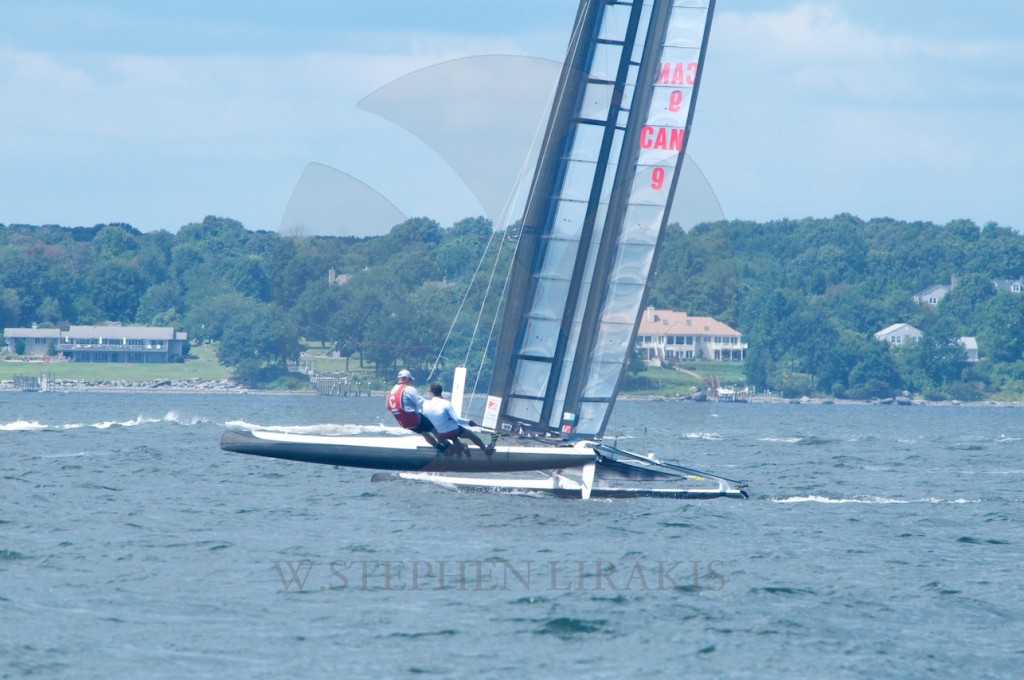
23 September – 28 September
International C Class Catamaran Championship
International C Class Catamaran Championship is a competition for C-Class catamarans that is held every 3 years. The boats are 25 feet long, 14 feet wide, with a crew of two and a 42 feet high solid “wingsail”, they are capable of a spectacular 25 knots. This is the first competition in Britain since the 1960s. First sailed in Britain in the 1960s, the Cup has not been won here for over 40 years. In Rhode Island USA, the 2010 event was won by the Canadian team; The GB team Invictus came third out in a field of seven.
You can expect 16-20 craft taking part in the International C Class Catamaran Championship. This many have never been seen together before; they will come from the US, Canada, Australia, New Zealand, France, Italy, Sweden and Britain. They will practice in the first week, which is then followed by fleet racing and finally match racing between the leading two boats. Each day the boats will sail from Restronguet Sailing Club to the race area and return on completion of racing.
Racing will be in Falmouth Bay or the Carrick Roads, depending on wind and sea conditions. They can be watched from Pendennis Point car park or Trefusis headland if in the Roads and from the water.
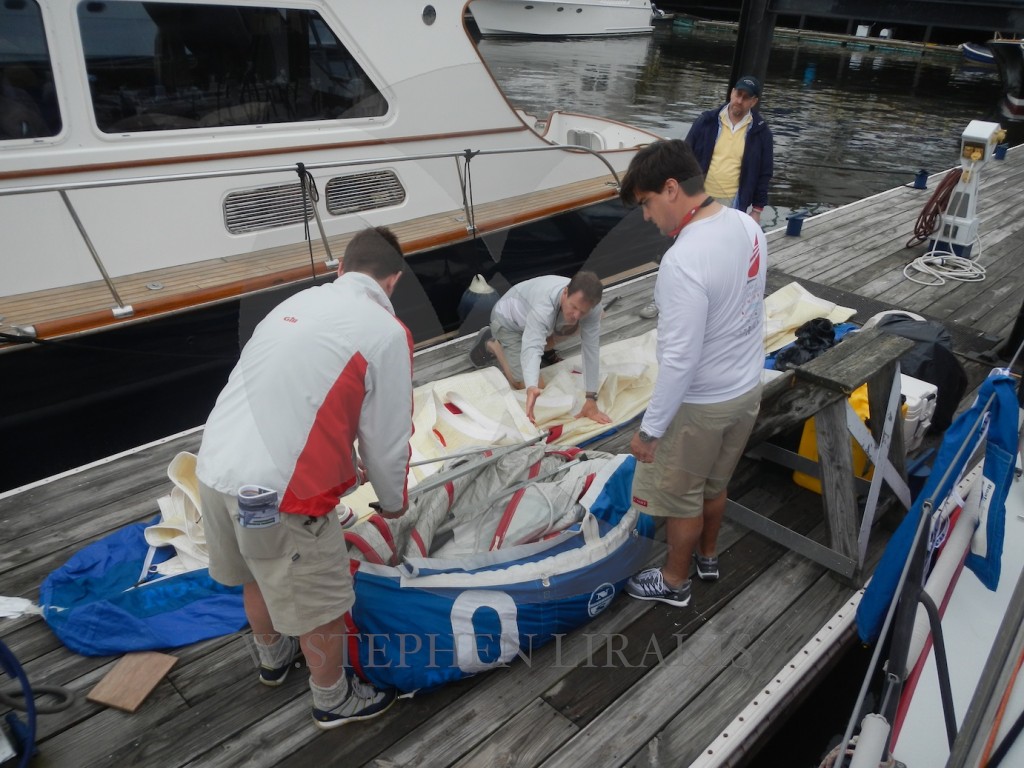
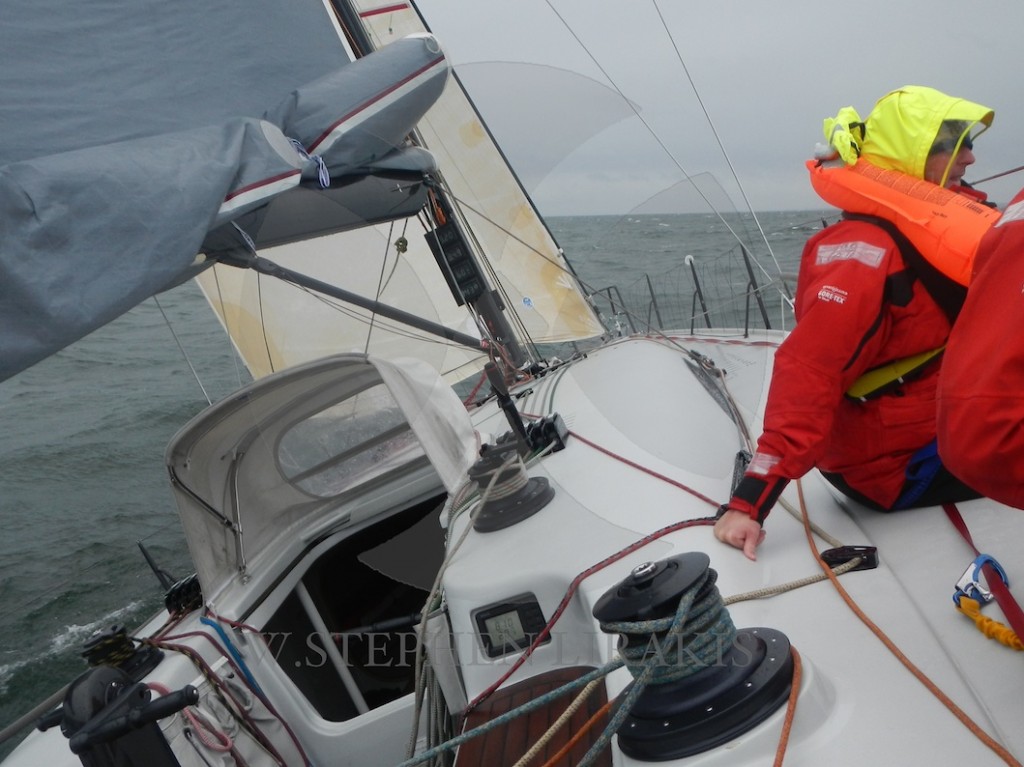
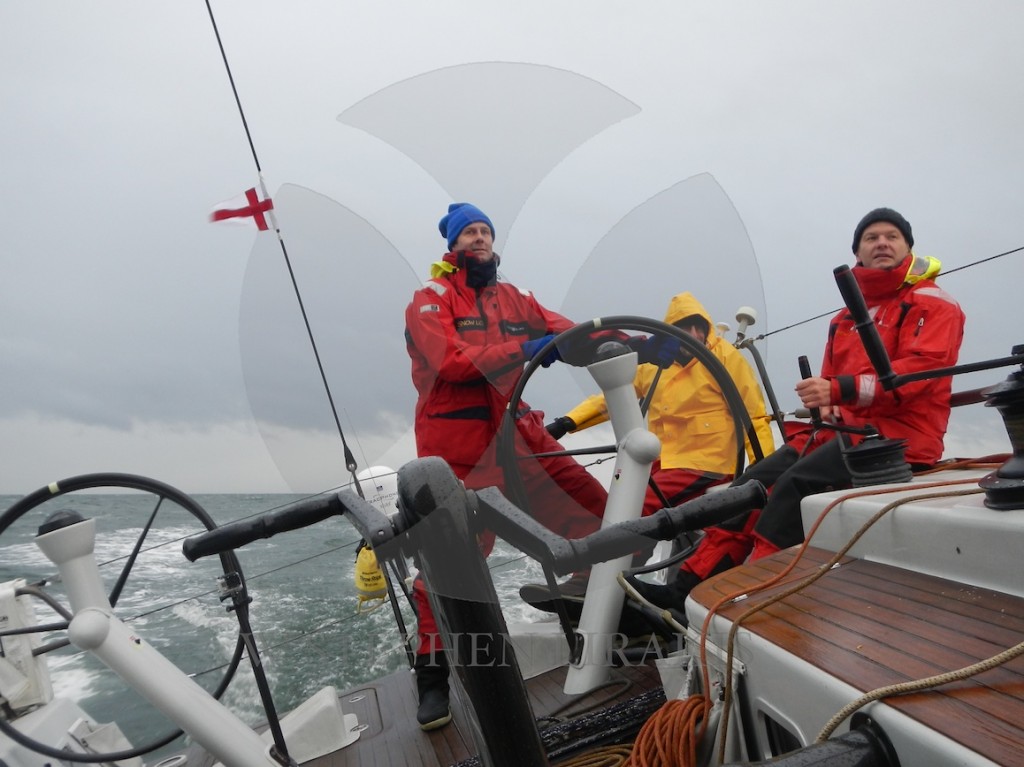
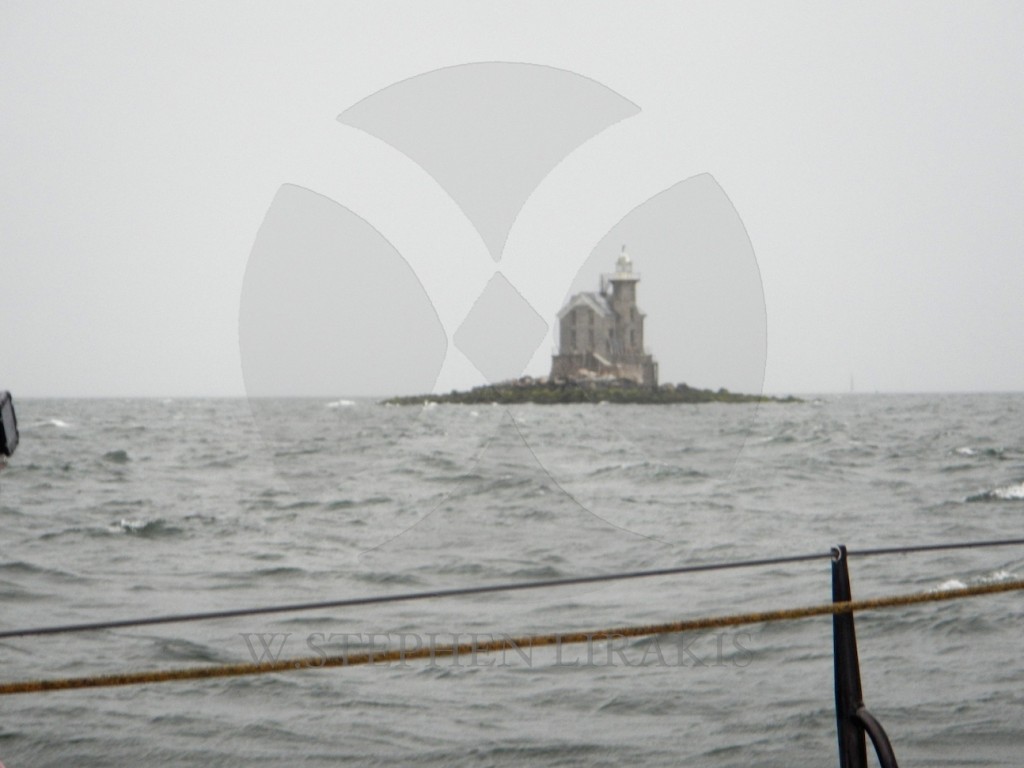
As I indicated earlier, every Block Island Race race is unique this one was no different. We sailed the course in just under 21 hours; the fastest I have ever completed the course. However, every other boat also sailed their fastest race. We started at 3:15 pm on Friday afternoon, we were out of the sound by 9 pm, 1BI at 1am Saturday morning, finishing at 12 noon Saturday. The wind was 15-35 knots from 315-015 compass bearing, with rain on and off. Back in Newport by 6:30 pm that night.